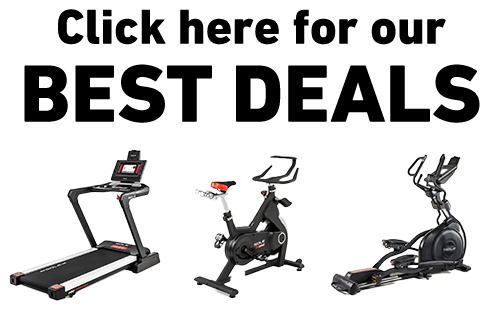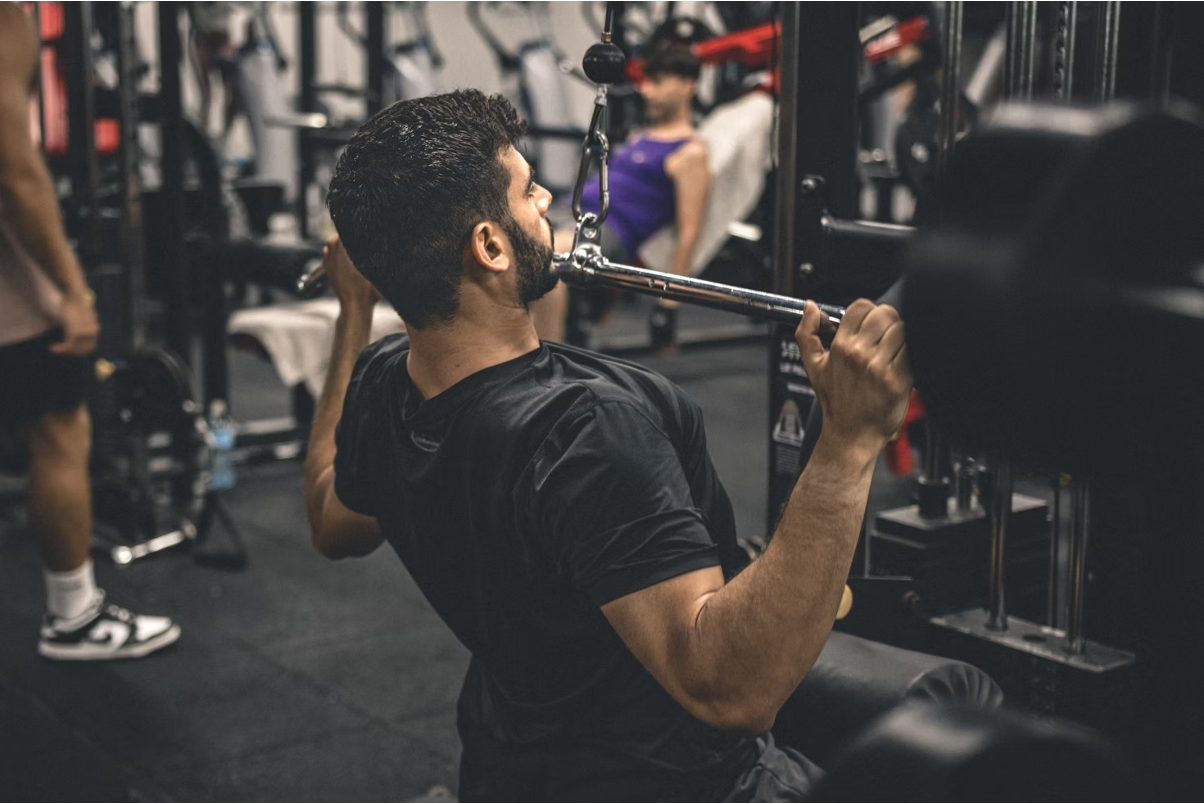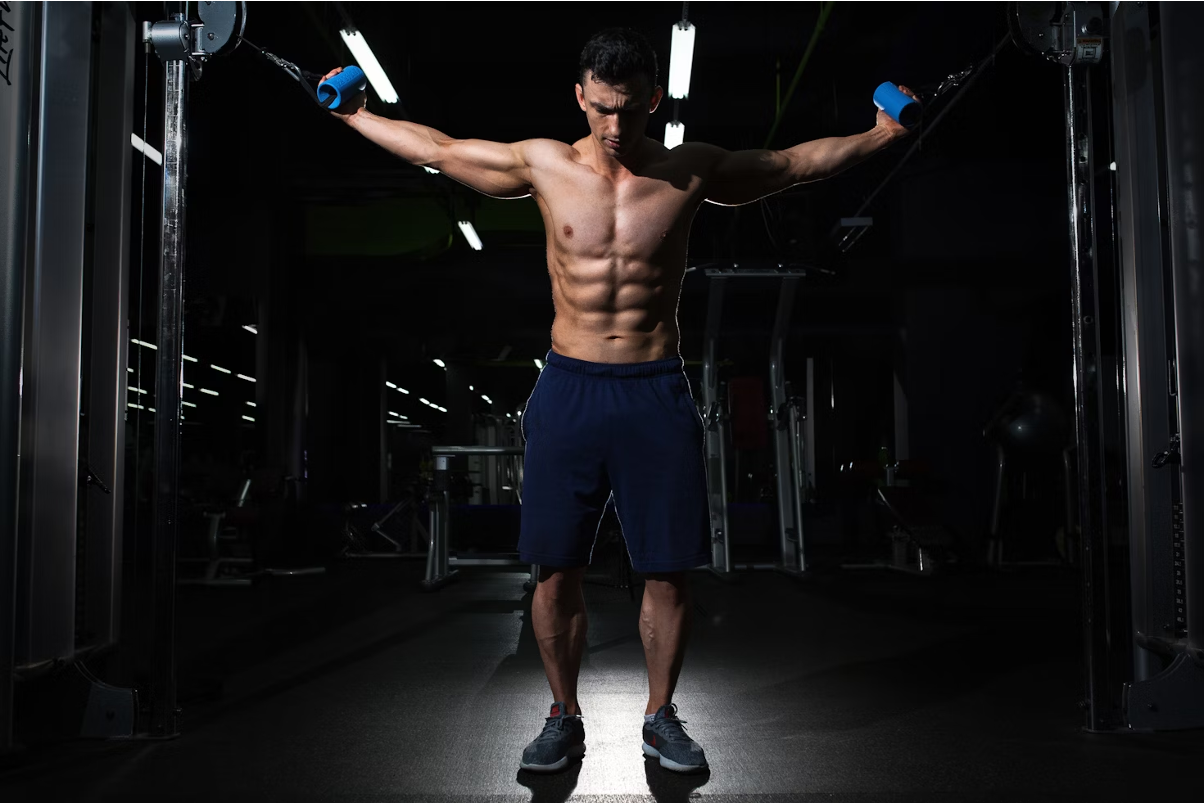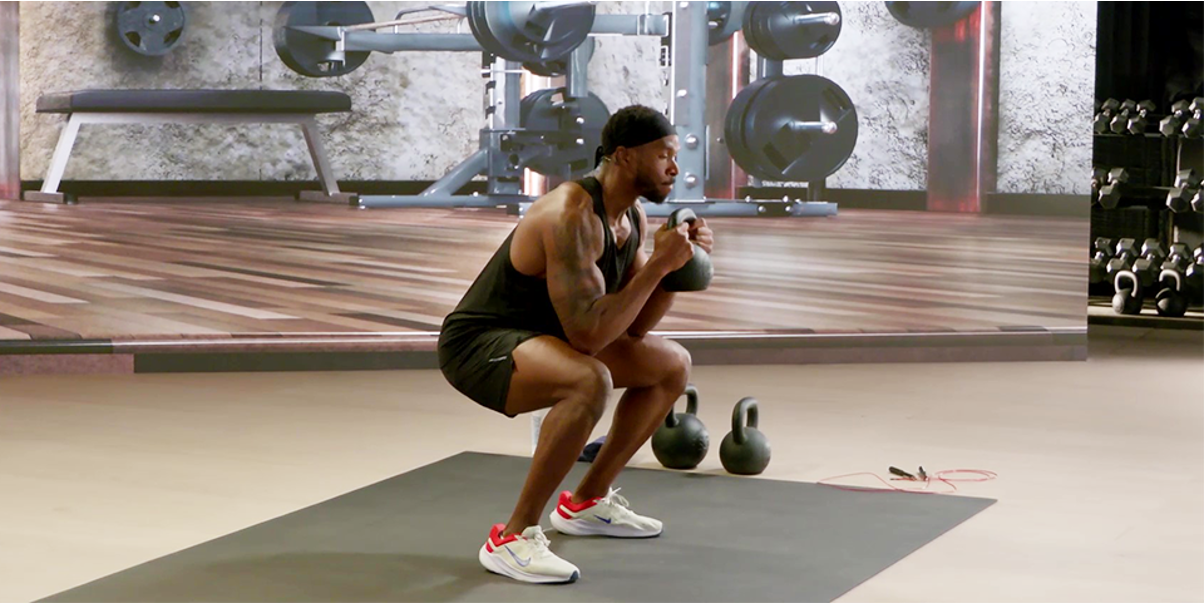Key Takeaways
- Dumbbell bent-over rows, single-arm dumbbell rows, and resistance band seated pulldowns effectively target lats without specialized equipment.
- Proper form is crucial; pull with your elbows and fully engage lats rather than using momentum.
- Resistance bands offer variable resistance that mimics lat pulldown tension curves.
- You can build an impressive V-taper back at home with just dumbbells and resistance bands.
- SOLE adjustable dumbbells transform lat pulldown alternatives from makeshift home exercises into professional-quality back builders.
Why You Need Lat Pulldown Alternatives for Home Workouts
Let's be real—not everyone has access to a gym with lat pulldown machines. But that doesn't mean your back development has to suffer. With just dumbbells and resistance bands, you can target your lats and build that V-taper physique from home.
The lat pulldown is popular because it isolates your lats through a controlled vertical pull. But research shows that alternative movements activate the same muscles just as well. Some alternatives even work better because they engage stabilizer muscles that machines miss.
Whether you're building a home gym, traveling, or just want to mix things up, these three lat pulldown alternatives will help you build a stronger, wider back.
|
At SOLE, we're proud to offer top-quality exercise equipment designed for home and gym use. Our machines are built to meet the highest standards of durability and performance, making them ideal for fitness enthusiasts at any level. SOLE Products
|
Dumbbell Bent-Over Rows: The Complete Back Builder
The bent-over row might be the best compound movement for overall back development. (Image courtesy of Experience Life Magazine)
Proper Form for Maximum Lat Engagement
To really hit your lats with bent-over rows, your form has to be on point. Hold a dumbbell in each hand and hinge at your hips until your torso is nearly parallel to the floor. Let your arms hang straight down.
Keep your back flat (not rounded) and brace your core. Pull the dumbbells toward your hip pockets, not straight up to your chest. This angle change shifts the focus to your lats.
The mind-muscle connection matters here. Think of your elbows as hooks and your hands as just holding the weight. Pull with your elbows, not your biceps. Feel your lats contract as you bring the weight up. At the top, squeeze your shoulder blades together for a second before lowering with control.
Three Mistakes That Kill Your Results
First, don't swing the weights up. This takes tension off your lats and stresses your lower back. Second, many people pull too high, turning it into an upper back exercise instead of a lat exercise. Keep the dumbbells in line with your torso for better lat work.
Third, people often shortchange their range of motion. They don't lower the weights fully, which prevents complete lat stretching. Let your arms extend fully at the bottom to maximize muscle fiber recruitment. The lowering phase matters just as much as the lifting phase for muscle growth.
How to Progress Over Time
If you're new to bent-over rows, start light and nail the form first. Pick weights you can control for 12–15 reps. As you get stronger, add weight while keeping good technique. Intermediate lifters can add a brief pause at the top of each rep for more time under tension.
Advanced lifters can try variations like Meadows rows (using a barbell in a corner) or go heavier with one-arm dumbbell rows. You can also slow down the lowering phase, taking 3–4 seconds while keeping the pull explosive.
Single-Arm Dumbbell Rows: Target Your Lats With Precision
Single-arm dumbbell rows are perfect for balanced back development and stopping your dominant side from taking over.
Step-by-Step Technique Guide
Put your same-side knee and hand on a bench. Your other foot stays on the ground for stability. Hold a dumbbell in your free hand with your arm extended toward the floor. Keep your back flat and parallel to the ground, not twisted up.
Pull the dumbbell up alongside your body, driving your elbow toward the ceiling and keeping it close to your torso. Start the movement from your lat, not your arm. At the top, your upper arm should be roughly parallel to your torso with the elbow pointing back. Lower with control.
For better lat work, play with elbow position. A slightly wider elbow path (away from your body) can increase lat activation compared to pulling straight against your ribs.
Why This Exercise Mimics Lat Pulldown Mechanics
Single-arm rows create a diagonal pulling pattern that closely matches the angle of lat pulldowns. This similarity makes it one of the best substitutes for the machine. Working one arm at a time also helps you focus entirely on that side's lat.
Another benefit is freedom at your shoulder joint. Unlike exercises that lock you into position, single-arm rows let your shoulder blade move naturally. This can reduce injury risk while maximizing muscle recruitment.
Best Bench & Body Positions for Lat Activation
Bench height affects which muscles work most. A lower bench keeps your torso more parallel to the ground, which better isolates your lats. A higher bench shifts emphasis to your upper back. For maximum lat development, keep the bench at or below hip height.
Resistance Band Seated Pulldowns: Closest to the Real Thing
If you want the closest thing to a real lat pulldown, resistance bands are your answer. The vertical pulling pattern perfectly copies the machine exercise, making this ideal for those who specifically want lat pulldown mechanics.
Bands have a unique advantage; they get harder to stretch as you pull, providing most tension when your lats are fully contracted. This matches your lats' strength curve better than fixed machine resistance. (Image courtesy of bestelnuar)
The best part? You can do this anywhere you can anchor a band overhead. Perfect for travel or outdoor workouts when you can't get to a gym.
Setting Up Without Special Equipment
All you need is a resistance band and something to anchor it. A door frame with a door anchor works great, but you can also use a pull-up bar, tree branch, or squat rack. Sit on the floor or bench directly under your anchor point. Grab the band ends with both hands, starting with arms extended overhead.
No commercial door anchor? Make one by tying a knot in a towel, closing it on the top of a door, and looping your band through the exposed part. Make sure the door opens away from you for safety. You can also loop the band around a secure beam or railing overhead.
Resistance Band Selection for Your Strength Level
Choose a band that challenges you in the 8–12 rep range. You should feel significant tension at the bottom but still achieve full range of motion. Too light won't stimulate growth. Too heavy ruins your form.
Bands come color-coded by strength. Beginners start with lighter bands (usually yellow or red) and progress to heavier ones. Advanced lifters might need to double up bands or buy extra-heavy ones. Some people stack different resistance bands for a more comfortable tension curve.
How to Create the Right Angle for Lat Isolation
Body position makes all the difference for lat work. Sit with a slight backward lean, about 10–15 degrees from vertical. This matches the natural lean people use on lat pulldown machines. Keep your chest up and shoulders back and down.
Pull slightly toward your upper chest, not straight to your lap. This creates the best line for lat engagement. Start each rep by pulling your shoulder blades down before using your arms. At the bottom, your hands should reach about chin or upper chest level, with elbows pointing down rather than back.
Adding Variable Resistance Throughout the Movement
Bands get progressively harder as they stretch, which matches your strength curve during pulldowns. You're strongest at the contracted position, right where bands provide most resistance.
Start each rep with slight tension—don't let the band go completely slack at the top. For more resistance variety, combine bands of different strengths or anchor the band slightly forward. Some advanced lifters even hold light dumbbells while using bands for a hybrid resistance that challenges muscles differently.
Build That V-Taper Back with SOLE's Complete Home Setup
You've learned three killer lat pulldown alternatives, but let's talk about maximizing your results with the right equipment.
SOLE's adjustable dumbbells are absolutely perfect for both bent-over rows and single-arm rows, giving you 16 weight options from 5–80 pounds in one compact set. No more cluttering your home with multiple dumbbells or making do with whatever's lying around.
What makes SOLE ideal for back training? It's the details that matter. The balanced weight distribution means you're focusing entirely on that mind-muscle connection with your lats, not fighting wobbly weights.
The ergonomic handles of the SW180 and SW155 dumbbells reduce grip fatigue during high-volume back sessions. This is crucial when you're doing multiple rowing variations in one workout. Plus, the quick-adjust system lets you seamlessly switch weights between exercises or drop sets.
Add the SW116 Weight Bench and you've got the perfect stable platform for single-arm rows. Its rock-solid construction means zero wobble even with heavy weights, letting you really focus on pulling with your lats instead of worrying about balance. The multiple angle adjustments also open up incline row variations for hitting your back from different angles.
The SOLE+ app completes your back-building arsenal with expert form cues and structured programs that show you exactly how to progress with these exercises. No monthly fees, just professional guidance included with your equipment.
Ready to build a back that commands attention? Check out the complete SOLE strength collection.
Frequently Asked Questions (FAQ)
Can I build a V-taper back without doing lat pulldowns?
Absolutely! The V-taper comes from wide lats combined with a narrow waist. These alternatives directly target your lats for back width. Many bodybuilders built impressive physiques before modern machines existed.
The key is consistency with progressive overload and proper form. Some lifters actually develop better mind-muscle connection using free weights and bands instead of machines.
How heavy should my dumbbells be for these exercises?
The ideal dumbbell weight varies based on your current strength level and experience. As a starting point, choose weights that allow you to complete 8–12 repetitions with proper form, where the last 2–3 reps feel challenging.
For bent-over rows, most women typically start with 10–20 pound dumbbells, while men often begin with 20–35 pounds. For single-arm rows, you can usually go about 20–30% heavier than your bent-over row weight since you're focusing on one side at a time.
How often should I train my back muscles for best results?
Generally, training each muscle group 2–3 times per week works best for growth. For most people, this means two dedicated back workouts per week or adding back exercises to three full-body sessions. Wait at least 48 hours between intense back sessions for recovery.
Beginners do well with 2 full-body workouts including back exercises weekly. Intermediate lifters can handle 2–3 dedicated back workouts. Advanced lifters might do 3–4 back sessions with varied intensity.
Can these exercises help with posture problems?
Yes, pulldown alternatives strengthen lats and lower traps for proper shoulder and spine posture, especially if you sit at a desk all day
For best posture benefits, combine pulling exercises with chest and shoulder stretches. Focus on perfect form, especially retracting your shoulder blades. Many experts recommend twice as many pulling exercises as pushing for desk workers. Even 10–15 minutes of back work several times weekly can significantly improve posture.
How do SOLE adjustable dumbbells compare to fixed dumbbells for back exercises like rows?
This is where SOLE equipment really shines for back training. With exercises like bent-over rows and single-arm rows, you typically need different weights for each exercise—maybe 30 pounds for bent-over rows but 40 pounds for single-arm rows.
With fixed dumbbells, that means buying multiple pairs that take up a ton of space. The SW180 Adjustable Dumbbells give you everything from 5–80 pounds with a simple dial twist.




Leave a comment
This site is protected by hCaptcha and the hCaptcha Privacy Policy and Terms of Service apply.